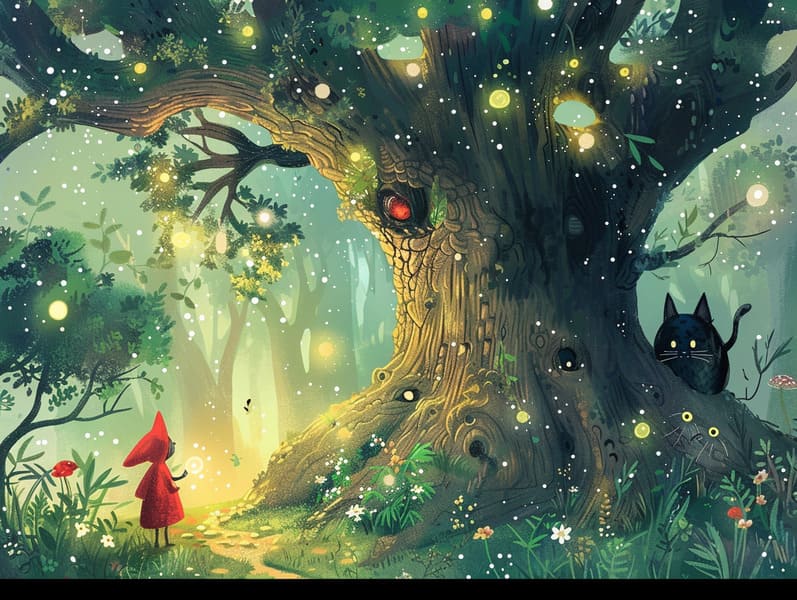The Origins of Online Fairy Tales with Its Timeless Fascination.
The Origins of Online Fairy Tales with Its Timeless Fascination.
Blog Article

Vintage fairy tales have long histories. These tales have been whispered from one generation to the next well before they were ever recorded. They developed from a variety of cultures, including Eastern traditions. They were initially transmitted among mature audiences, often carrying themes and messages concerning the societal norms and beliefs of the time.
The famous Grimm duo, Jacob and Wilhelm, were among the first to compile and publish many of these beloved fairy tales. Their collection, "Grimm's Story Collection," included classics like "The Little Glass Slipper," "Little Brother and Little Sister," and "Snow-White and Rose-Red," which have since become classics in the world of children's fairy tales. Similarly, the Danish author's whimsical stories, such as "The Story of the Little Mermaid," and "The Ugly Duckling," have captured hearts worldwide, guaranteeing their place in the pantheon of treasured fairy tales.
Though they are old, these stories remain as meaningful as ever, especially as bedtime stories for kids. These magical stories are now available in numerous formats, including colorful picture books, delightful animations, and online storybooks.
Their unwavering allure can be connected to several fascinating points:
Significant Morals: Old fairy tales often whisper important moral lessons. Narratives like "The Boy Who Cried Wolf" teach the merit of honesty, while "The Tortoise and the Hare" stress the virtues of steadfastness and modesty. These narratives offer children clear distinctions between good and bad, molding their moral compass in a subtle yet meaningful way.
Warmth and Understanding: Fairy tales frequently involve individuals facing difficulties and adversities, inciting readers to connect with their struggles and support their triumphs. For instance, "The Tale of Beauty and the Beast" highlights the benefit of seeing beyond the surface to understand the true being of a individual, promoting awareness and comprehension.
Cultural Appreciation: Many old fairy tales are deeply embedded in the cultural contexts from which they originated. Discovering these tales can provide captivating looks into different traditions, promoting a sense of global understanding and knowledge.
Imagination and Innovation: The imaginative elements in traditional fairy tales—fairy godmothers—provoke children’s imaginations. These tales lead readers to extraordinary realms, generating creative thinking and a sense of delight that lasts a lifetime.
Traditional fairy tales are not only mesmerizing but also instructive. They work as captivating tools in building various mind and heart abilities in children. When ancient fairy tales are narrated, they boost verbal development by bringing new word meanings and complicated sentence structures. This practice also promotes auditory perception and attentiveness, as young readers track the narrative, anxious to see what happens next.
Furthermore, examining the themes and characters of old fairy tales can cultivate logical thinking and critical thinking. Young ones are instructed to recognize patterns, predict happenings, and grasp cause and effect. These discussions also encourage little ones express their thoughts and feelings, nurturing their emotional intelligence.
In today’s information age, the accessibility of web-based fairy tales has made these narratives more available than ever. Online platforms and online apps make available huge assortments of children's fairy tales that can be perused or listened through anytime, anywhere. Fairy tales told out loud are particularly popular, presenting an fun way for website the young to appreciate these magical stories. Narrated books and read-to-me stories take characters and settings to life, often complemented by delightful sound effects and soundtracks that boost the tale journey.
The unending appeal of timeless fairy tales lies in their ability to transform to the present while holding onto their core messages. Contemporary reimaginings of these tales often present more different protagonists and modern settings, making them accessible to today’s audience. However, the underlying themes of valour, empathy, and fairness remain unchanged, continuing to move children of all ages.
Fairy tales also offer a sense of contentment and knowability. They disclose a orderly narrative with a clear beginning, middle, and end, often concluding with the settlement of conflicts and the triumph of virtue over wickedness. This foreseeability can be calming for young readers, furnishing a sense of steadfastness in an unstable world.
Ancient fairy tales continue to charm and instruct new generations, maintaining their magic and relevance in modern society. As children's night stories, they afford a perfect blend of charm and enlightenment, backing moral values, empathy, and creativity. The accessibility of online storybooks and the sought after status of fairy tales narrated affirm that these timeless tales remain within reach to new generations.
By holding onto and recounting these fairy tales, we continue to venerate the rich tapestry of mythology and cultural heritage. Whether you are viewing a richly illustrated book, perusing a web-based library, or hearing an sound book, the elegance of timeless fairy tales is always within reach. These narratives emphasize of the continued influence of narratives and its ability to bring us together across eras and regions.
If you are perusing a vividly illustrated book, enjoying a internet library, or listening to an audiobook, the beauty of bedtime fairy tales is always within reach.
These narratives teach us of the endless spell of stories and its ability to gather us across epochs and places, weaving a spell that charms and informs alike.